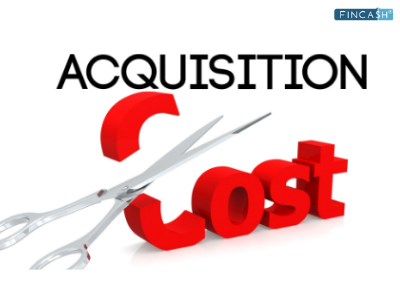Define Explicit Costs
In business, understanding costs is crucial for effective financial management. One category of costs that plays a significant role in shaping business decisions is explicit costs. It refers to a business's tangible, monetary expenses in its day-to-day operations. These costs are explicit because they are directly accounted for and involve actual cash outflows.
What do Explicit Costs Contain?
Explicit costs encompass a wide Range of expenditures, including but not limited to:
- Employee Salaries: Wages and salaries paid to employees for their services.
- Raw Materials: The cost of acquiring materials and inputs essential for production.
- Rent and Utilities: Expenses related to leasing business premises and utility bills.
- Marketing and Advertising: Expenditures on promotional activities to enhance the visibility of products or services.
- insurance: Costs associated with business insurance coverage to mitigate risks.
- Interest Payments: Interest paid on loans or borrowed Capital.
- Taxes: Various Taxes imposed by governmental authorities, including Income and sales taxes.
Check Here!
Explicit Cost Example
Let's consider an explicit cost example for a Manufacturing business, XYZ Pvt. Ltd., which produces handmade furniture. The company sources high-quality wood, varnish, and other materials for crafting their furniture. The explicit cost in this scenario is the actual monetary expenditure on these raw materials.
XYZ Pvt. Ltd. purchases teak wood from a reliable supplier, a key raw material for their furniture. The cost incurred for procuring a specific quantity of teak wood, say Rs. 1,00,000, is explicit. This includes the negotiated price per unit, transportation costs, and any taxes associated with the purchase. The company invests in high-quality varnish and finishing materials. Let's say the explicit cost for these materials amounts to Rs. 20,000.
Various other materials, such as screws, nails, and adhesives, contribute to the furniture-making process. The explicit cost for these additional raw materials might be Rs. 10,000.
Total Explicit Cost for Raw Materials: Rs. 1,00,000 (Teak Wood) + Rs. 20,000 (Varnish and Finishing Materials) + Rs. 10,000 (Other Raw Materials) = Rs. 1,30,000
In this example, the explicit cost is quantifiable, directly associated with the production process, and involves actual cash outflows for acquiring the necessary materials. Understanding and managing such explicit costs allows XYZ Pvt. Ltd. to calculate the cost of production precisely, set competitive prices, and make informed decisions to optimise their manufacturing processes in the Indian Market.
Relevance of Explicit Costs in the Business Landscape
Here is how explicit cost is related to the business landscape:
Cost Control and Budgeting: Understanding explicit costs is crucial for entrepreneurs to effectively control costs and create realistic budgets. By identifying and categorising these tangible expenses, businesses can develop accurate Financial plan contributing to sustainable growth.
Profitability Analysis: Explicit costs play a pivotal role in assessing the profitability of products or services. Entrepreneurs can analyse explicit costs against revenue streams to determine the viability of different business segments and make informed decisions about resource allocation.
Resource Allocation: Explicit costs guide entrepreneurs in allocating resources efficiently. By evaluating the explicit costs associated with different aspects of the business, such as production, marketing, and administration, entrepreneurs can prioritise investments based on their impact on the bottom line.
Investment Decisions: Entrepreneurs must carefully analyse explicit costs when considering expansions or investments in new projects. This involves evaluating the monetary outlays required for the venture and assessing the potential returns to make informed investment decisions.
Navigating Explicit Costs in Business Operations
When you want your business operations to run as smoothly as possible, here is how you can navigate explicit costs effortlessly:
Accurate Record-Keeping: Entrepreneurs should maintain accurate and detailed financial records to navigate explicit costs effectively. This includes recording all monetary transactions related to salaries, raw materials, rent, and other explicit costs.
Cost Analysis Tools: Utilising cost analysis tools and software can aid entrepreneurs in categorising and analysing explicit costs. This enables a more granular understanding of where resources are allocated and facilitates strategic decision-making.
Regular Cost Audits: Regular cost audits allow entrepreneurs to identify areas where explicit costs can be optimised. By scrutinising expenses, businesses can uncover opportunities for cost reduction without compromising operational Efficiency.
Negotiation and Cost Reduction Strategies: Entrepreneurs can actively negotiate with suppliers, landlords, and service providers to explore cost reduction opportunities. Strategies to negotiate favourable terms for explicit costs contribute to overall business profitability.
Conclusion
Understanding and effectively managing explicit costs are fundamental to long-term success in the dynamic business landscape. By embracing accurate record-keeping, leveraging cost-analysis tools, conducting regular audits, and implementing strategic cost-reduction measures, entrepreneurs can confidently navigate explicit costs.
All efforts have been made to ensure the information provided here is accurate. However, no guarantees are made regarding correctness of data. Please verify with scheme information document before making any investment.












